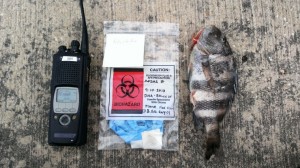 September 10, 2013, will forever live in infamy for Lt. Cmdr. Nick Toth, NOAA pilot, and for everyone else involved in the first recorded “fish strike,” in the history of NOAA at MacDill that occurred that morning.
September 10, 2013, will forever live in infamy for Lt. Cmdr. Nick Toth, NOAA pilot, and for everyone else involved in the first recorded “fish strike,” in the history of NOAA at MacDill that occurred that morning.
At roughly 10:50 a.m., Toth and the rest of the aircrew were cleared for takeoff and started their roll in their Gulfstream GIV.
“We were nearing the point in the takeoff where we needed to rotate, or raise the nose of the airplane off the ground, when an Osprey with something in its claws flew in front of our aircraft,” explained Toth. “We saw that the Osprey did not gain enough altitude, and that it passed underneath the centerline of the aircraft.”

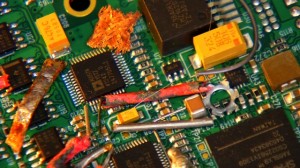 IPC has released a new program that focuses exclusively on FOD Prevention in Electronics Assembly.
IPC has released a new program that focuses exclusively on FOD Prevention in Electronics Assembly.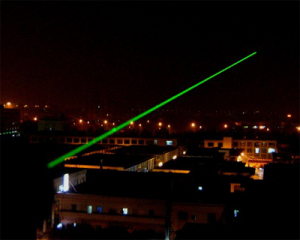
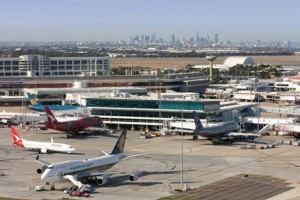 An explosive engine failure on a Vietnamese airliner showered fiery debris across a runway at Australia’s second busiest airport Tuesday, bringing all traffic at the airport to a standstill.
An explosive engine failure on a Vietnamese airliner showered fiery debris across a runway at Australia’s second busiest airport Tuesday, bringing all traffic at the airport to a standstill. Aaron Betts is a wildlife biologist with the U.S. Department of Agriculture, assigned to oversee the Bird/Wildlife Aircraft Strike Hazard program at Vance Air Force Base and at Kegelman Air Force Auxiliary Field.
Aaron Betts is a wildlife biologist with the U.S. Department of Agriculture, assigned to oversee the Bird/Wildlife Aircraft Strike Hazard program at Vance Air Force Base and at Kegelman Air Force Auxiliary Field. Foreign Objects in food constitute one of the most serious causes of consumer complaints and can result in substantial losses and brand damage to companies associated with the incidents. While some of these complaints are justified and the objects behind them can be considered as true foreign bodies, others may be due to poorly mixed or misprocessed product. Additionally, it is common for the foreign body to have been introduced into the product by the customers themselves, either accidentally, through home contamination or, more concerningly, as a result of malicious contamination, whether by the complainant or by someone involved in food manufacture or distribution. Nevertheless, when complaints are received, it is important to be able to identify the nature and origin of the object both quickly and cost-effectively, so that an appropriate response can be made. This is particularly so in the age of social networking, where complainants can readily publicize their dissatisfaction.
Foreign Objects in food constitute one of the most serious causes of consumer complaints and can result in substantial losses and brand damage to companies associated with the incidents. While some of these complaints are justified and the objects behind them can be considered as true foreign bodies, others may be due to poorly mixed or misprocessed product. Additionally, it is common for the foreign body to have been introduced into the product by the customers themselves, either accidentally, through home contamination or, more concerningly, as a result of malicious contamination, whether by the complainant or by someone involved in food manufacture or distribution. Nevertheless, when complaints are received, it is important to be able to identify the nature and origin of the object both quickly and cost-effectively, so that an appropriate response can be made. This is particularly so in the age of social networking, where complainants can readily publicize their dissatisfaction.
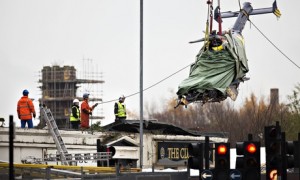
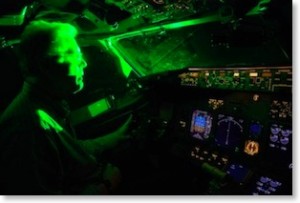 Laser pointers being directed into the cockpits of aircraft are becoming an increasing hazard for pilots as these powerful handheld lasers become more affordable and widespread. There were 3,960 such strikes reported last year, the FAA says. That’s up from 283 in 2005.
Laser pointers being directed into the cockpits of aircraft are becoming an increasing hazard for pilots as these powerful handheld lasers become more affordable and widespread. There were 3,960 such strikes reported last year, the FAA says. That’s up from 283 in 2005.
 Despite their renowned wisdom, snowy owls migrating south are mistaking airport runways for safe habitat, putting themselves, and air travelers, at risk. Right now, perhaps the largest ever number of Arctic snowy owls — yes, the type beloved by Harry Potter and friends—are descending on the Northeast and Great Lakes states in one of what may be several waves of arrivals. (Such an influx is called an “irruption,” just for the record.)
Despite their renowned wisdom, snowy owls migrating south are mistaking airport runways for safe habitat, putting themselves, and air travelers, at risk. Right now, perhaps the largest ever number of Arctic snowy owls — yes, the type beloved by Harry Potter and friends—are descending on the Northeast and Great Lakes states in one of what may be several waves of arrivals. (Such an influx is called an “irruption,” just for the record.)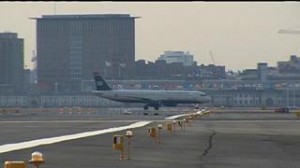 Boston Logan International has become the first airport in the US to use an automated runway FOD detection system. The airport has had the state-of-the-art FODetect system installed, developed by Xsight Systems, that has been sited on runway 09-27, which is the busiest departure runway at Boston Logan.
Boston Logan International has become the first airport in the US to use an automated runway FOD detection system. The airport has had the state-of-the-art FODetect system installed, developed by Xsight Systems, that has been sited on runway 09-27, which is the busiest departure runway at Boston Logan. Engineers from Airbus and their customer Easyjet have teamed up to create an artificial ash cloud to test a sensor that could help avoid massive airspace closures after a volcanic eruption.
Engineers from Airbus and their customer Easyjet have teamed up to create an artificial ash cloud to test a sensor that could help avoid massive airspace closures after a volcanic eruption. The new FODetect foreign object debris (FOD) detection systems went operational in mid-May at Tel Aviv’s Ben-Gurion International Airport (LLBG). The equipment, developed by Israeli company Xsight Systems, was certified after an evaluation process and soft launch on Ben Gurion’s primary Runway that begun in August of 2012.
The new FODetect foreign object debris (FOD) detection systems went operational in mid-May at Tel Aviv’s Ben-Gurion International Airport (LLBG). The equipment, developed by Israeli company Xsight Systems, was certified after an evaluation process and soft launch on Ben Gurion’s primary Runway that begun in August of 2012.

